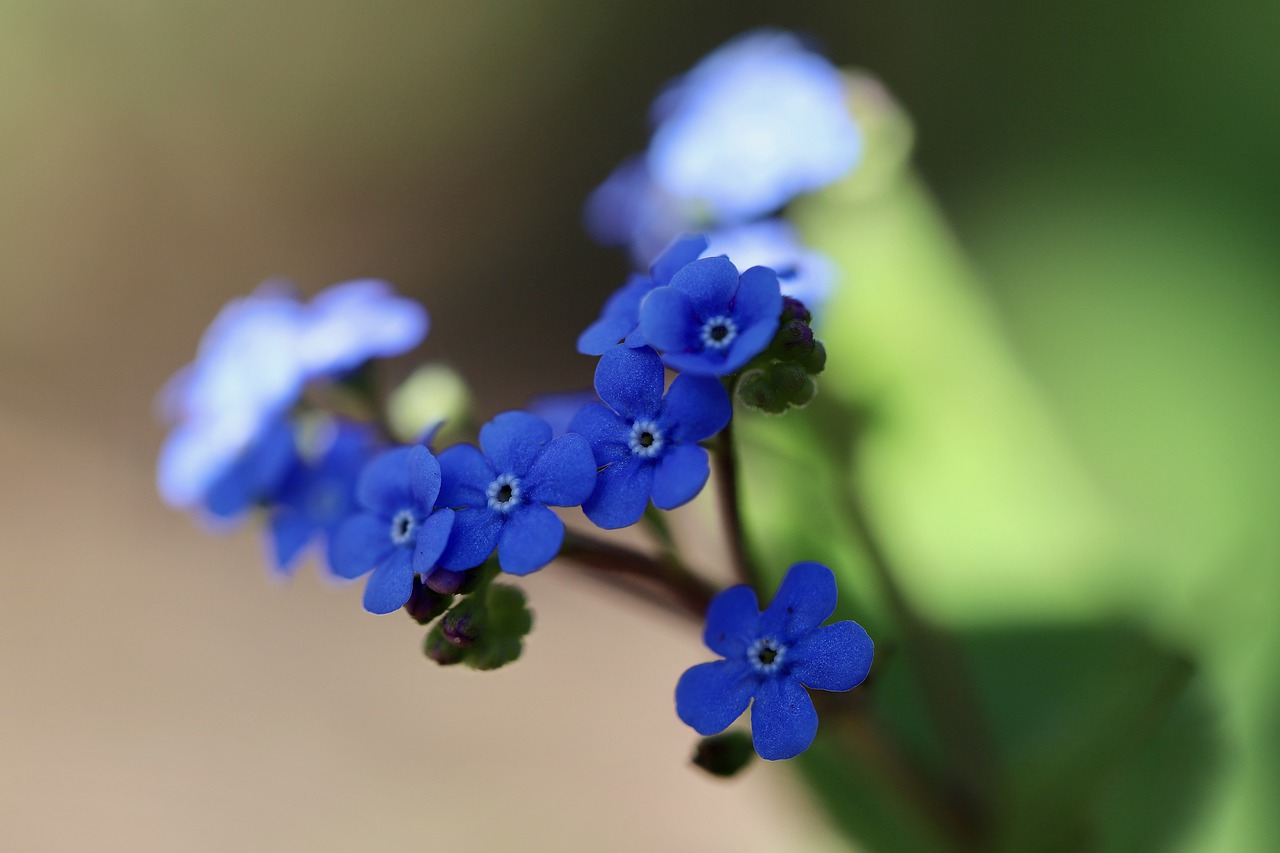
Myosotis and Planting: A Guide to Growing Forget-Me-Not Flowers
In the world of gardening, there are few flowers as charming and endearing as the Myosotis, commonly known as the Forget-Me-Not. These delicate and dainty blooms have captured the hearts of gardeners for generations. If you’re interested in adding these enchanting flowers to your garden, you’ve come to the right place. In this comprehensive guide, we’ll explore the art of planting Myosotis, ensuring your garden is graced with their beauty.
Understanding Myosotis: The Forget-Me-Not Flower
Before you embark on your journey to plant Myosotis, it’s essential to understand these charming flowers. Myosotis, often referred to as Forget-Me-Nots, are small, dainty perennials with distinct, sky-blue petals and bright yellow centers. They’re known for their endearing appearance and their symbolic association with true love and remembrance.
Forget-Me-Nots have a rich history, with their name stemming from a beautiful legend. It is said that as a medieval knight was picking these lovely flowers for his lady, he fell into a river due to the weight of his armor. While he was drowning, he threw the bouquet toward his beloved and cried out, “Forget me not!” These words have since become synonymous with the charming blooms.
Benefits of Planting Myosotis
Myosotis flowers bring more than just visual appeal to your garden. We’ll delve into the various benefits of planting these lovely blooms:
- Low Maintenance: Forget-Me-Nots are remarkably easy to care for, making them an excellent choice for novice gardeners.
- Attract Pollinators: These flowers are fantastic at attracting pollinators like bees and butterflies, promoting a healthy garden ecosystem.
- Symbolic Significance: Myosotis carry deep symbolic significance, often representing true love, remembrance, and a connection that endures.
Choosing the Right Location
Selecting the perfect spot for your Myosotis is crucial to their success. These flowers thrive in partial shade, where they can receive a few hours of sunlight each day. They prefer well-draining soil, but they are adaptable to various soil types. Consider planting them in areas where they will receive some shelter from harsh afternoon sun, especially in warmer climates.
Preparing the Soil for Myosotis
Healthy soil is the foundation of a thriving garden. Before planting Myosotis, it’s essential to prepare the soil. Loosen the soil and incorporate organic matter like compost to improve drainage and nutrient content. This will create the optimal environment for your Myosotis plants to flourish.
Planting Myosotis Seeds
We’ll provide a step-by-step guide on how to plant Myosotis seeds:
- Timing: Plant Myosotis seeds in the spring or early summer for best results.
- Depth: Sow the seeds at a shallow depth, no more than 1/8 inch, and cover lightly with soil.
- Spacing: Space the seeds or seedlings at least 6 to 12 inches apart to give them room to grow.
Caring for Myosotis
Myosotis are generally low-maintenance, but they still require care to flourish. Here’s how to care for your Forget-Me-Not flowers:
- Watering: Keep the soil consistently moist but not waterlogged. Water the plants at the base to prevent wetting the foliage.
- Fertilizing: Use a balanced, all-purpose fertilizer during the growing season.
- Deadheading: To encourage continuous blooming, deadhead spent flowers by snipping them off.
Myosotis Varieties
Myosotis come in various species and cultivars, each with its unique characteristics. Some common varieties include:
- Myosotis sylvatica: The woodland forget-me-not is a classic choice with bright blue flowers.
- Myosotis scorpioides: Known as the water forget-me-not, it thrives near water features.
- Myosotis arvensis: The field forget-me-not is smaller and perfect for borders and rock gardens.
Common Myosotis Pests and Diseases
Like any plant, Myosotis can face their share of challenges. Here are common pests and diseases to be aware of:
- Aphids: These tiny insects can sometimes infest Myosotis. Use insecticidal soap to control them.
- Powdery Mildew: This fungal disease can affect the leaves. Remove infected plant parts and use fungicides if necessary.
Tips for Successful Myosotis Planting
To ensure a successful Myosotis planting experience, consider these tips:
- Mulch: Apply a layer of organic mulch around your Myosotis to help retain moisture and prevent weeds.
- Support: Provide support for taller varieties to keep them from flopping over.
- Regular Inspection: Check your plants regularly for signs of pests or disease and take action promptly.
Frequently Asked Questions About Myosotis
Q1: Can Myosotis be grown in containers?
A1: Yes, Myosotis can be grown in containers, provided they have proper drainage.
Q2: How do I propagate Myosotis?
A2: Myosotis can be propagated by division or from seeds.
Q3: What is the meaning behind the name “Forget-Me-Not”?
A3: “Forget-Me-Not” symbolizes true love and remembrance.
Q4: When is the best time to plant Myosotis?
A4: The best time to plant Myosotis is in the spring or early summer.
Q5: Do Myosotis attract hummingbirds?
A5: Myosotis primarily attract bees and butterflies due to their nectar-rich flowers.
Conclusion
In conclusion, Myosotis, the Forget-Me-Not flowers, are a delightful addition to any garden. Their charming blue blooms and rich symbolism make them a beloved choice for gardeners. By following the guidelines and tips outlined in this article, you can successfully plant and care for Myosotis, ensuring a vibrant and enchanting garden that you won’t forget. So, let these lovely blossoms grace your garden and become an enduring symbol of beauty and remembrance.